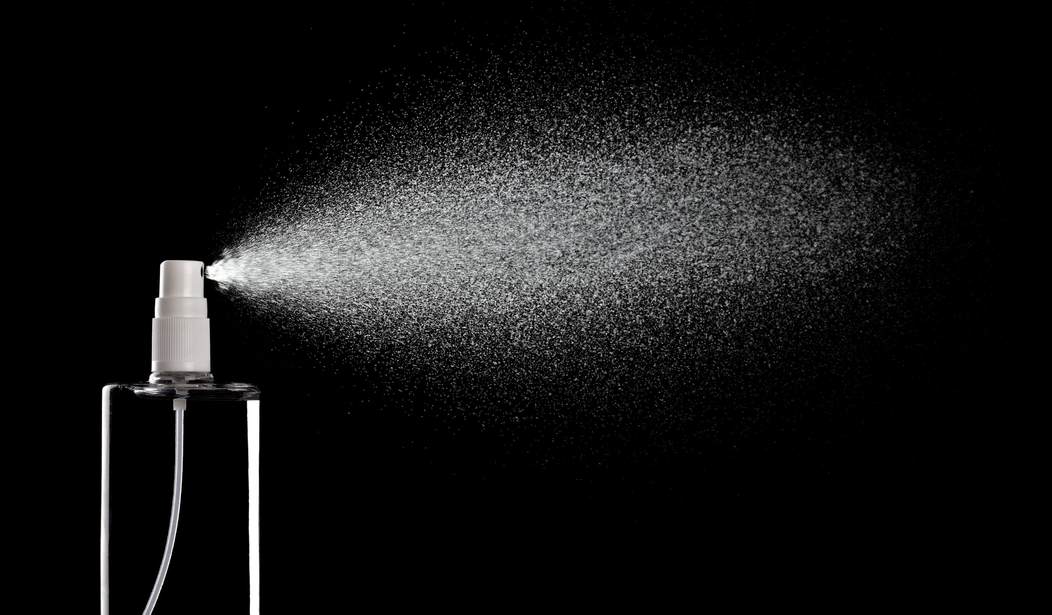For years now a woman, we’ll call her Jane Doe, has called the syndrome she’s afflicted by a fragrance allergy. But in most cases the term is actually a misnomer. The symptoms and sickness that fragrance products cause in susceptible humans are rarely true allergic reactions
From a column by Dr. James Thompson at Healthnet:
While people often assume they are allergic to fragrance, they are usually mistaken. Allergic reactions are typically triggered by organic substances – pollen, food, mold spores, dust mites, animal and cockroach dander, feathers. These are capable of inducing white blood cells to make IgE antibody which is what makes them allergic trigger factors.
Fragrances, in contrast, are often comprised of synthetic chemicals. Thus, technically, they are irritants, not allergens. Technically, the precise diagnosis is irritant reaction. Jane is made sick by the chemicals that exist in fragranced products, everything from cologne to incense to rug cleaner.
If Jane could stay home—a home stocked with fragrance-free products—she’d be fine. But she has to work, needs to shop, and likes to go to her favorite restaurants. She also holds season tickets to her local symphony orchestra. She likes to travel, and is always in quest of lodging that smells freshly neutral, and it’s not easy. She has a friend who quit a job after an office-wide carpeting job off-gassed her out of the building.
Jane’s discomfort and illness surfaces when she finds herself subjected to fragrance products in closed-in environments. She’s exited more than her share of elevators on floors that weren’t hers. She’s walked out of promising shops and stores because either the clientele or the sales floor itself is doused to the gills. A single fragrance can be challenging to Jane’s health; a combination of fragrance factors can send her running.
Fresh air can effectively quash Jane’s irritant reaction if she can escape quickly enough. If she is corralled in a fragrance stew for any length of time, it takes her awhile to regain full equilibrium.
Her employer, the proprietor of a leasing office, has been supportive, directing staff to use discretion in the application of perfumes and colognes. On several occasions her boss allowed Jane to retreat to a closed-door office when a collection of clients jacked the volatile organics level through the roof. It can be challenging to convince people that their favorite fragrance products can trigger Jane’s symptoms: raw nose and throat, instantaneous headache centered on the sinuses and frontal lobe, severe nausea, and asthmatic-type breathing problems, among others.
Jane’s physician has been sensitive to her condition, monitoring her overall health and prescribing a good oxygen inhaler for those times when pockets of heavily fragranced air are inescapable. He knows that Jane’s complaints are legitimate, and has several patients who suffer worse.
Jane’s boyfriend got the message early in their relationship. He steers clear of any possibly irritating fragrance, and knows his best bet is freshly-showered olifactory neutrality.
Though the ingredients for patented products are largely protected by copyright, researchers have identified over 150 different chemicals used in the manufacture of fragrance products. Some are proven carcinogens.
Awareness is growing; online support communities have sprung up around shared stories, information, and consumer activism. Certain public buildings—hospitals particularly, where healthcare workers are regularly exposed to a stew of chemical fragrances—have instituted policies mandating a fragrance-free workplace. Her hometown orchestra has added italicized language at the bottom of the brochure received by all season ticket holders: Please respect our chemically sensitive patrons by not wearing heavy colognes and perfumes.
Body scent-makers are seeking alternatives to products like Axe cologne, an aptly-named brew capable of thoroughly sickening Jane in the time it takes her to escape.
Chemical manufacturers and cosmetics companies have spent billions developing and marketing fragrances. But one Jane’s provocative scent is another Jane’s poison. Jane wants people to understand that exposing her to chemicals which are detrimental to her physiological wellbeing is just as bad as subjecting her to cigarette smoke.
Jane and others who suffer this malady wish it were not so. They get sick, and they also wish they didn’t have to play the role of fragrance Nazi.
So, when you see Jane run, don’t take it personally. It’s your fragrance product she’s running from, not you.









Join the conversation as a VIP Member